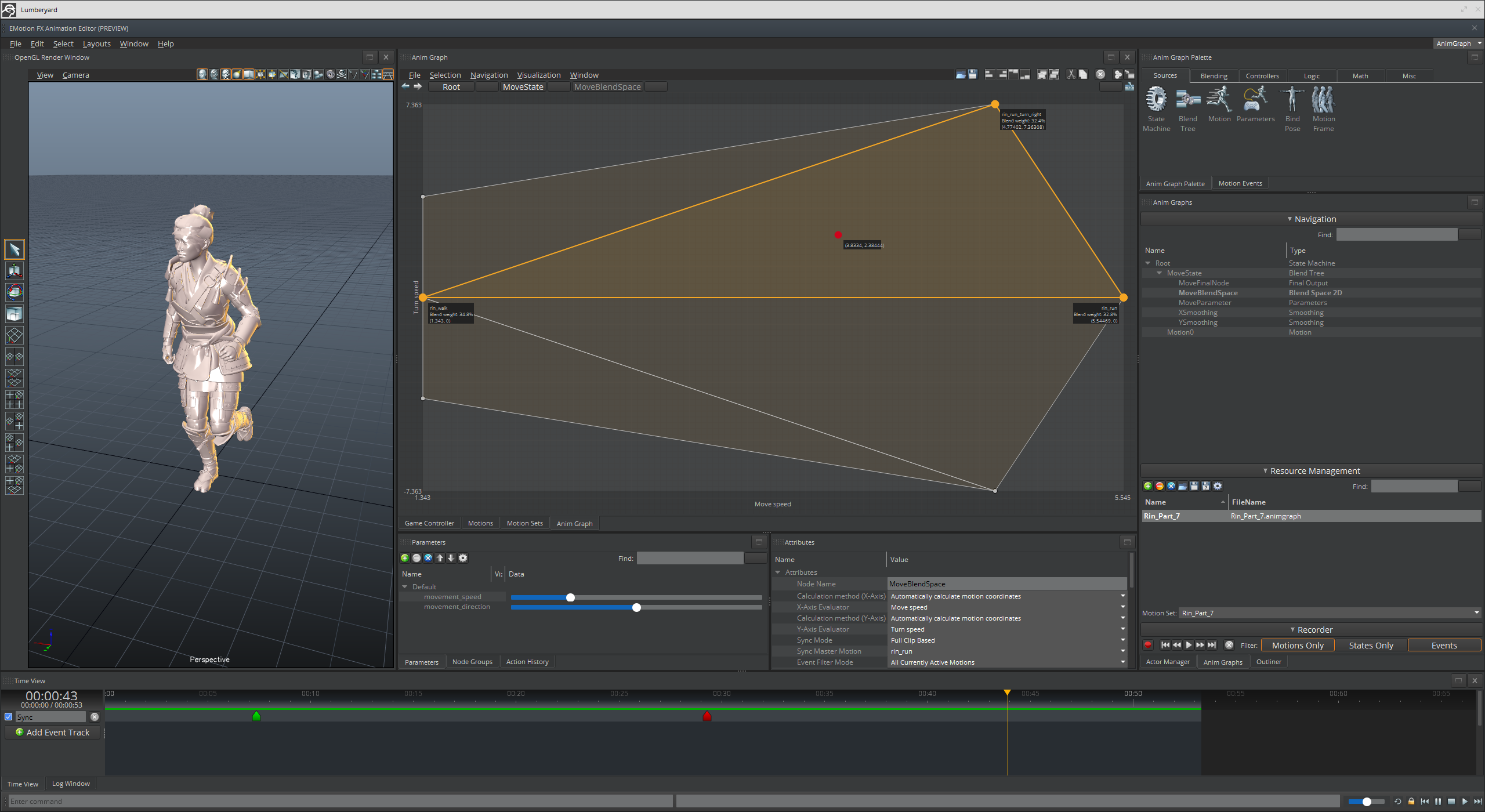AWS for Games Blog
Goodbye to Flow Graph and CryAnimation. Hello to Brand New Visual Scripting and Animation Tools.
Lumberyard is not the same engine it was yesterday. If you’ve been away for a while, now’s a great time to take another look.
Check out our new visual scripting and animation tools. Download Lumberyard 1.11 here.
Over the course of 19 months, we’ve replaced over 60% of the original codebase, made over 3,300 improvements, and added over 500 free unique assets for you to use in your game projects. But this latest release marks a crucial turning point for the engine and the experiences you can create with it. Here’s why:
- EMotion FX is now our new animation system, replacing CryAnimation (as well as Geppetto and Mannequin). Now you can create character animations in as little as 10 minutes with little to no engineering chops, including functionality like blendtrees, state machines, blendspaces, and motion extraction. EMotion FX has been used by the likes of EA and Ubisoft for over a decade, and now it’s a permanent part of Lumberyard, providing a powerful and easy solution for artists. (Give it a try using our character Rin in the new game sample included with 1.11! Learn more how to access the sample here.)
- Script Canvas is now our new visual scripting solution, replacing Flow Graph. Script Canvas provides an approachable solution for authoring behaviors while utilizing the same framework as Lua and C++. That means you can take those cool characters you animated using EMotion FX and quickly create scripted behaviors using Script Canvas—all in a matter of minutes, without the need for engineers. With its familiar node interface, Script Canvas will make it easier to build quality gameplay experiences, even if you have limited programming experience. We can’t wait to see what you build with it. (For a tutorial on how to get started with Script Canvas, you can check out latest documentation here.)
- With these new, forward-looking systems in place, we’ve also included a CryEntity Converter tool designed to convert legacy CryEntities to Lumberyard’s new Component Entity data format. This will help ensure that you’re benefiting from the new Lumberyard systems and providing a stable foundation for your games. There’s still a lot of work to do, of course, but we’re excited to continue to evolve and grow alongside such an amazing dev community. (To learn how to use this new tool, you can check out our tutorial here.)
EMotion FX
Script Canvas
Over 400 additional updates
There’s a lot more in this release. You can find full release notes here.
- You get three new Cloud Gems, including the ability to easily capture in-game surveys from your players, a text to speech gem that leverages the power of Amazon Polly, as well as a gem to build speech recognition and conversational gameplay experiences using Amazon Lex.
- There are now Project Templates that provide two starting points for new projects. The Default Template comes with a selection of Gems enabled and a simple level to use as a starting point. The Empty Template represents the bare minimum project for Lumberyard
- A new Getting Started Guide that will get you up and running in Lumberyard quicker than before—you’ll also make a maze escape game that you can share with your friends. You can find the documentation here, but expect a new series of videos in the near future.
- We also enabled an experimental feature that implements a full blown Toon Shader visual look for your games. For a fun demonstration of how this can transform your game, just load up Starter Game and use the console command ‘r_ApplyToonShading = 1’. This can be refined in shadeLib.cfi.
- Plus dozens of usability enhancements thanks to your feedback, including: drag and drop support for reordering entities in the Outliner and Asset Browser, new visuals for slice entities, 1-click activation of entities on game start, and if you are creating your own components, you can now associate URLs with those components to help your team ramp up.
Let us know what you think.
As we mentioned last week, your feedback helps shape our roadmap, so please keep it coming. You can learn more about Lumberyard by watching our tutorials, visiting the community forums, and reading through our documentation.


